Archaeology Island
Economic Might
By ANDREW LAWLER
Monday, February 11, 2013
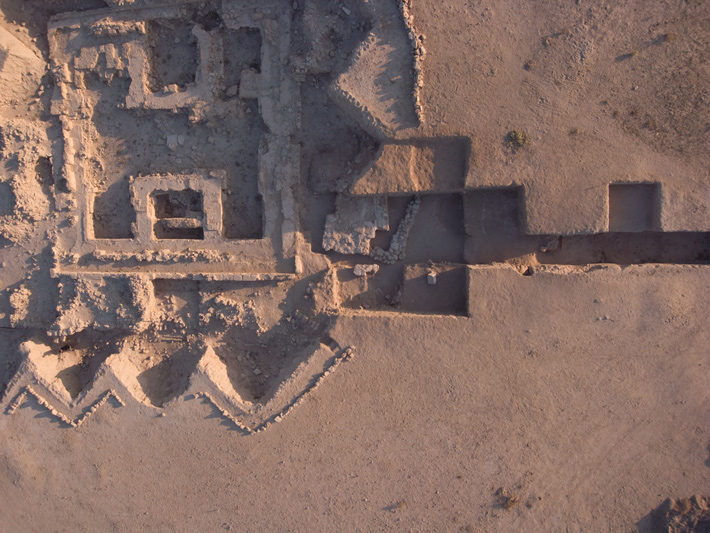
In the mythology of ancient Sumeria (modern Iraq), Dilmun is described as an Eden-like place of milk and honey. But by 2000 B.C., Dilmunites were leaving their homeland to become seagoing merchants and establish a powerful trading network that eventually stretched from India to Syria. Mesopotamian clay tablets refer to ships from Dilmun bringing wood, copper, and other goods from distant lands. By the nineteenth century B.C., Failaka had become a linchpin in the Dilmunites’ operations. At this point, after the Dilmunites had either ousted the Mesopotamians or merely succeeded them, there are no further signs of a Mesopotamian presence. The Dilmunites constructed a large temple and palace complex almost on top of the houses built by the earlier Mesopotamian residents. A French team that excavated the temple in the 1980s suggested that it was an oddity, possibly related to Syrian temple towers. But recent work by a team from the Moesgård Museum in Denmark points to a building remarkably similar to the Barbar sanctuary in Bahrain, considered the grandest Dilmun structure.
The Failaka temple sat on a large platform nearly 90 feet wide and 120 feet long and the temple itself once measured 60 feet square, only slightly smaller than the Barbar temple. The most impressive remains of the Failaka structure are the shattered, mammoth limestone columns that once supported the temple. Such stone is not found on the island. Dilmunites quarried the massive blocks on the mainland, then ferried them to the island, an impressive feat requiring not only extensive planning and coordination efforts, but also large, seaworthy craft. The columns were also highly valued in later eras, and much of their stone was plundered and taken back to the mainland in antiquity. The Moesgård team is now focusing on the so-called palace, originally excavated in the 1960s, that lies about 30 feet from the temple. Work is still under way, but there are signs that it may have served not as a royal residence but rather as an important series of large storerooms to house the goods that made the Dilmunites a formidable economic power.
Hidden Christian Community
By ANDREW LAWLER
Monday, February 11, 2013

The center of Failaka is a low-lying swampy area that is now the province of mosquitoes and wandering white camels that belong to the Kuwaiti emir. But a millennium ago, this was a three-square-mile pocket of fertile and well-watered plain cultivated by a small community of isolated Christians in a region populated by Muslims. Previous French excavations revealed several villages and two churches, including a possible monastic chapel. A Polish team led by Warsaw-based archaeologist Magdalena Zurek is now busy excavating nearby sites to understand the extent of the settlements that flourished in the eighth and ninth centuries A.D., several hundred years after the faith inspired by Muhammad swept through the region. “We know nothing about Christians on Failaka,” says Zurek, who suspects that a third church lies near her current excavation of a modest farmstead. 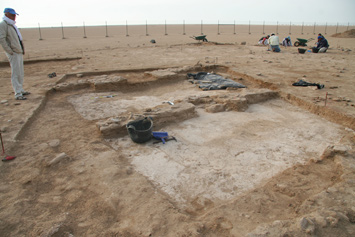 Although an old island tradition is that a community grew up around a Christian mystic and hermit, Zurek believes that Christians may have settled in the island’s interior in order to keep a low profile long after others in the region had converted to Islam. The small farms and villages, which were eventually abandoned, may mark the last refuge of Christianity in the region. Yet the larger of the two churches appears to have boasted a lofty bell tower that would have been visible far out to sea, hardly the sign of a community fearful of announcing its faith. There are few written documents of Christian life around the Persian Gulf in late antiquity and the early medieval period, and Zurek hopes that the work at Failaka, together with other excavations of ancient Christian settlements along the Gulf coast, may reveal their hidden history.
Although an old island tradition is that a community grew up around a Christian mystic and hermit, Zurek believes that Christians may have settled in the island’s interior in order to keep a low profile long after others in the region had converted to Islam. The small farms and villages, which were eventually abandoned, may mark the last refuge of Christianity in the region. Yet the larger of the two churches appears to have boasted a lofty bell tower that would have been visible far out to sea, hardly the sign of a community fearful of announcing its faith. There are few written documents of Christian life around the Persian Gulf in late antiquity and the early medieval period, and Zurek hopes that the work at Failaka, together with other excavations of ancient Christian settlements along the Gulf coast, may reveal their hidden history.
Pirate Hideout
By ANDREW LAWLER
Monday, February 11, 2013
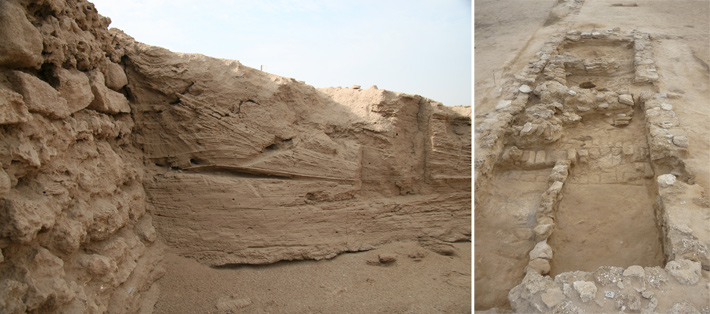
The story of Failaka after the abandonment of the Christian villages remains shadowy. Currently archaeologists are turning their attention to several sites that sit along the northern shore of the island to probe the medieval and early modern periods. The most interesting is located on a high spot overlooking the gulf, facing Iraq. Nearly 30 years ago, a team from the University of Venice surveyed the site, pinpointing a village, called Al-Quraniya, that dates to at least as early as the seventeenth century A.D., and possibly several centuries earlier. In 2010, an Italian team led by Gian Luca Grassigli of the University of Perugia began intensive fieldwork there. The excavators have since uncovered an array of pottery, porcelain, glass bangles, and bronze objects, including nails and coins, dating to between the seventeenth and nineteenth centuries A.D. The mound seems to have two large concentrations of building materials, and the archaeologists hope to make a detailed plan of the settlement in future campaigns. Deeper trenches may reveal evidence of earlier settlement, filling in the long gap between the abandonment of Christian villages and more recent times.
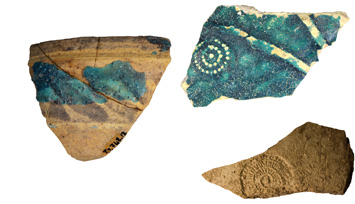 What is clear is that Failaka was still a notable outpost two millennia after Alexander. Just to the southeast of the village is a small square rock fort dating to about the sixteenth or seventeenth century. Some researchers believe that this structure was constructed by Portuguese soldier-merchants who did frequent business in the region. others suspect that Arab pirates built the base to attack the lucrative shipping lanes that led to wealthy Iraqi cities such as Basra or to ports along the Iranian coast to the east. In this era, european, Iranian, and chinese elites had a growing appetite for the gulf pearls that dominated the region’s economy. Pirates were a constant threat until the nineteenth century; British guns and diplomacy put an end to their raids.
What is clear is that Failaka was still a notable outpost two millennia after Alexander. Just to the southeast of the village is a small square rock fort dating to about the sixteenth or seventeenth century. Some researchers believe that this structure was constructed by Portuguese soldier-merchants who did frequent business in the region. others suspect that Arab pirates built the base to attack the lucrative shipping lanes that led to wealthy Iraqi cities such as Basra or to ports along the Iranian coast to the east. In this era, european, Iranian, and chinese elites had a growing appetite for the gulf pearls that dominated the region’s economy. Pirates were a constant threat until the nineteenth century; British guns and diplomacy put an end to their raids.
Ikaros of the Gulf
By ANDREW LAWLER
Monday, February 11, 2013
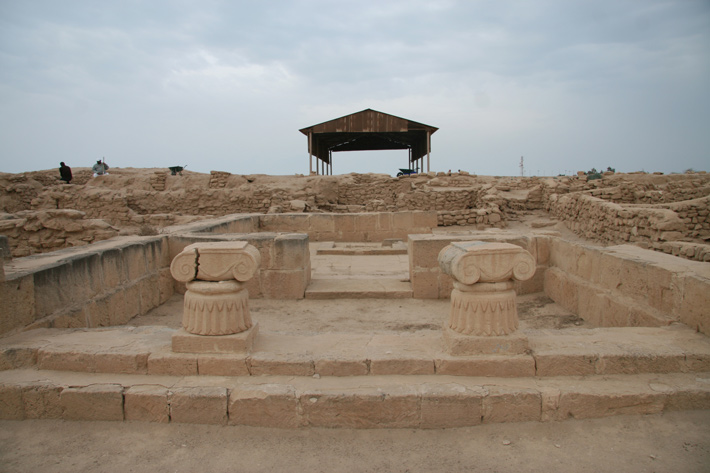
Failaka’s name is derived from the Greek word for outpost. But Alexander the Great, according to later classical authors such as Strabo and Arrian, gave Failaka the name Ikaros, since it resembled the Aegean island of that name in size and shape. French archaeologists working on the island in recent years have found several stone inscriptions dating to the fourth and third centuries b.c. mentioning the name Ikaros, as well as architecture and artifacts that reveal a bustling community with international ties during that period. The island’s accessible fresh water, easily defended coastline, and strategic location also attracted the attention of Alexander’s successors, who vied among themselves for control of regional trade routes. Antiochus I, who ruled the Seleucid Empire in the third century B.C., built a 60-foot-square fort around a well on Failaka. Inside the fortress compound, one small, elegant temple has Ionic columns and a plan that is quintessentially Greek, including an east-facing altar. This was no simple import, however, but a fascinating amalgamation of designs. The column bases, for example, are of the Persian Achaemenid style, similar to those in the capital, Persepolis, burned by Alexander’s troops in the fourth century B.C.
According to Mathilde Gelin from the French Institute of the Near East in Damascus, who is currently working at the site, this unusual pairing reflects a rare fusion of Greek and Eastern cultures—much like Antiochus himself, who was the son of a Macedonian general and a Bactrian princess, likely from today’s Afghanistan. The sturdy fort eventually grew into a bustling port town, with other temples, houses, and larger fortifications, until its eventual abandonment by the first century b.c. Gelin hopes the current excavations will reveal what role the fort and settlement played in both island life and that of the wider region during a time of remarkable cultural mixing.
The Battle of Failaka
By ANDREW LAWLER
Monday, February 11, 2013
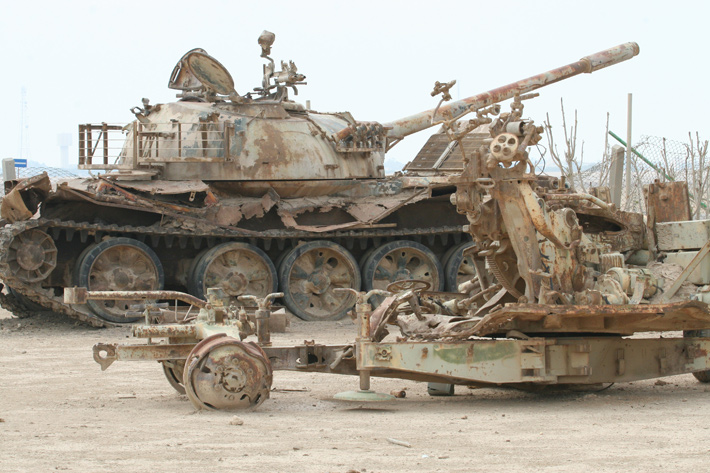
By the twentieth century, the advent of air travel and the discovery of oil on the Kuwaiti mainland put Failaka on the margins of the Persian Gulf’s rush toward modernization. For most of the last 100 years, the island was home to a handful of fishermen and villagers, and the only new inhabitants were those Kuwaitis who built beach homes to escape the mainland’s blistering summer heat. In 1990, there were a modest 2,000 full-time residents. But on August 2 of that year, Failaka’s location once again came into play when Iraqi forces attacked the island as part of their invasion of Kuwait. The island’s defenses consisted only of a small contingent of troops, which the Iraqis quickly overwhelmed, and the population was expelled. American forces retook the island in 1991, in turn expelling the 1,400 Iraqi soldiers who had made it their base. After the Iraqis were driven back across the border into Iraq, the Kuwaiti military used what remained of Failaka’s modern town for target practice. 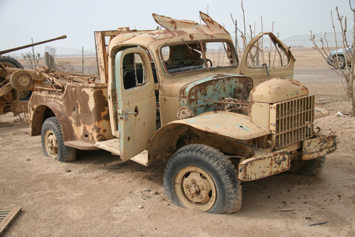 Today, the houses are riddled with shell holes. And just outside the settlement, protected by a high fence, is the latest evidence that the advantages of Failaka’s strategic position didn’t end in ancient times. Rusted and battered tanks, armored vehicles, and other army equipment damaged and destroyed during the First Gulf War litter the ground. As clearly as the Mesopotamian seals and Greek temples, these burnt and twisted metal shells speak to the island’s continuing role in Middle Eastern history.
Today, the houses are riddled with shell holes. And just outside the settlement, protected by a high fence, is the latest evidence that the advantages of Failaka’s strategic position didn’t end in ancient times. Rusted and battered tanks, armored vehicles, and other army equipment damaged and destroyed during the First Gulf War litter the ground. As clearly as the Mesopotamian seals and Greek temples, these burnt and twisted metal shells speak to the island’s continuing role in Middle Eastern history.
Advertisement
Advertisement
IN THIS ISSUE
Advertisement

Recent Issues
-
 May/June 2024
May/June 2024
-
 March/April 2024
March/April 2024
-
 January/February 2024
January/February 2024
-
 November/December 2023
November/December 2023
-
 September/October 2023
September/October 2023
-
 July/August 2023
July/August 2023
-
 May/June 2023
May/June 2023
-
 March/April 2023
March/April 2023
-
 January/February 2023
January/February 2023
-
 November/December 2022
November/December 2022
-
 September/October 2022
September/October 2022
-
 July/August 2022
July/August 2022
-
 May/June 2022
May/June 2022
-
 March/April 2022
March/April 2022
-
 January/February 2022
January/February 2022
-
 November/December 2021
November/December 2021
-
 September/October 2021
September/October 2021
-
 July/August 2021
July/August 2021
-
 May/June 2021
May/June 2021
-
 March/April 2021
March/April 2021
-
 January/February 2021
January/February 2021
-
 November/December 2020
November/December 2020
-
 September/October 2020
September/October 2020
-
 July/August 2020
July/August 2020
-
 May/June 2020
May/June 2020
-
 March/April 2020
March/April 2020
-
 January/February 2020
January/February 2020
-
 November/December 2019
November/December 2019
-
 September/October 2019
September/October 2019
-
 July/August 2019
July/August 2019
-
 May/June 2019
May/June 2019
-
 March/April 2019
March/April 2019
-
 January/February 2019
January/February 2019
-
 November/December 2018
November/December 2018
-
 September/October 2018
September/October 2018
-
 July/August 2018
July/August 2018
-
 May/June 2018
May/June 2018
-
 March/April 2018
March/April 2018
-
 January/February 2018
January/February 2018
-
 November/December 2017
November/December 2017
-
 September/October 2017
September/October 2017
-
 July/August 2017
July/August 2017
-
 May/June 2017
May/June 2017
-
 March/April 2017
March/April 2017
-
 January/February 2017
January/February 2017
-
 November/December 2016
November/December 2016
-
 September/October 2016
September/October 2016
-
 July/August 2016
July/August 2016
-
 May/June 2016
May/June 2016
-
 March/April 2016
March/April 2016
-
 January/February 2016
January/February 2016
-
 November/December 2015
November/December 2015
-
 September/October 2015
September/October 2015
-
 July/August 2015
July/August 2015
-
 May/June 2015
May/June 2015
-
 March/April 2015
March/April 2015
-
 January/February 2015
January/February 2015
-
 November/December 2014
November/December 2014
-
 September/October 2014
September/October 2014
-
 July/August 2014
July/August 2014
-
 May/June 2014
May/June 2014
-
 March/April 2014
March/April 2014
-
 January/February 2014
January/February 2014
-
 November/December 2013
November/December 2013
-
 September/October 2013
September/October 2013
-
 July/August 2013
July/August 2013
-
 May/June 2013
May/June 2013
-
 March/April 2013
March/April 2013
-
 January/February 2013
January/February 2013
-
 November/December 2012
November/December 2012
-
 September/October 2012
September/October 2012
-
 July/August 2012
July/August 2012
-
 May/June 2012
May/June 2012
-
 March/April 2012
March/April 2012
-
 January/February 2012
January/February 2012
-
 November/December 2011
November/December 2011
-
 September/October 2011
September/October 2011
-
 July/August 2011
July/August 2011
-
 May/June 2011
May/June 2011
-
 March/April 2011
March/April 2011
-
 January/February 2011
January/February 2011
Advertisement






